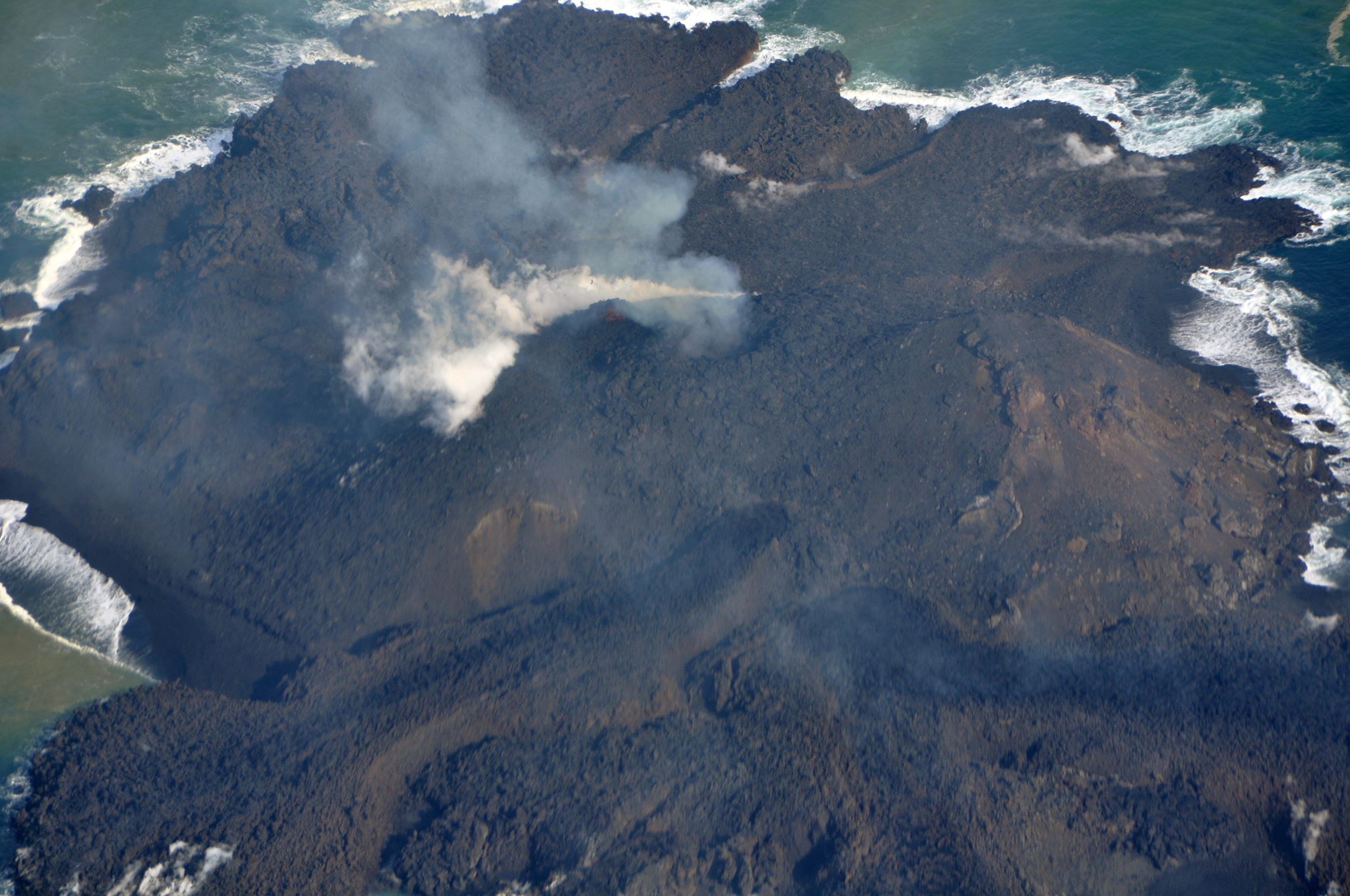
Ten years after a new islet born in a massive eruption nearby swallowed it, remote Nishinoshima island in the Ogasawara island chain is still showing signs of volcanic activity.
A survey from an Asahi Shimbun aircraft on Nov. 3 confirmed white fumarolic gas rising from a central crater and the slopes and surrounding sea areas turned brown and green.
The activity puts the island’s recovering ecosystem at risk, which has seen a decrease in the number of seabirds.
In the Ogasawara island chain, eruptions have occurred at Fukutoku-Okanoba, an undersea volcano, and Iwoto, a volcanic island.
“The entire Ogasawara island chain is now in a period of very active volcanic activity,” said Setsuya Nakada, a volcanic geologist and professor emeritus at the University of Tokyo, who was aboard the aircraft.
On Nov. 20, 2013, an eruption occurred on the seafloor near Nishinoshima, about 1,000 kilometers south of Tokyo, creating a new island about 500 meters south-southeast of the island.
The new island, initially about 200 meters in diameter, expanded with lava from the eruption and merged with Nishinoshima in December. The new Nishinoshima further expanded.
A large-scale eruption occurred in 2020, spewing out volcanic ash. Smaller eruptions have since continued.
Today, the island is about 4 square kilometers, about 14 times the size of the original Nishinoshima.
During the flight on Nov. 3, a white speckled plateau was visible on Nishinoshima. White parts were remnants of feces left by seabirds that have been breeding on the island.
Two types of seabirds of the booby and gannet family–two brown boobies and five masked boobies–were seen from the sky.
“The number of seabirds has dramatically decreased,” said Kazuto Kawakami, an ornithologist who heads the wildlife ecology laboratory at the Forestry and Forest Products Research Institute. “I have no idea what will happen to Nishinoshima’s ecosystem.”
Kawakami has been studying the island since the eruption in 2013.
Nishinoshima was one of Japan’s leading seabird breeding grounds before the eruption, but the lava that covered the island reset its ecosystem.
There are no islands within 130 kilometers of Nishinoshima, so it can be deduced that the ecosystem is being created from scratch.
The first on-site scientific survey after the eruption was conducted in October 2016.
Researchers confirmed that brown boobies and masked boobies were breeding on the island after volcanic activity subsided.
A survey by a research team including Kawakami also found the breeding of five species related to brown boobies and common terns. Insects, such as a type of carpet beetle, were also discovered.
The presence of a large number of American cockroaches was confirmed in a survey.
However, eruption activity became active again in December 2019, and a large amount of volcanic ash covered the entire island the following year.
Contrary to the expectation of researchers that seabirds would disappear, thousands arrived to breed on the island in 2021.
However, numerous abandoned eggs were found near nests.
Researchers said the topography changed due to the eruptions and the success rate of breeding was greatly reduced.
The number of seabird nests observed in 2023 was about one-third of those in 2019.
“We found that the number of seabirds has decreased due to indirect effects rather than direct effects of eruptions,” Kawakami said. “The future of the island’s ecosystem will depend on whether seabirds continue to settle there. We need to continue research.”
Source : Asahi Shimbun





